Bio106 final exam
5.0(2)
Card Sorting
1/211
Earn XP
Description and Tags
Study Analytics
Name | Mastery | Learn | Test | Matching | Spaced |
|---|
No study sessions yet.
212 Terms
1
New cards
Hydroxyl Group
\-OH
2
New cards
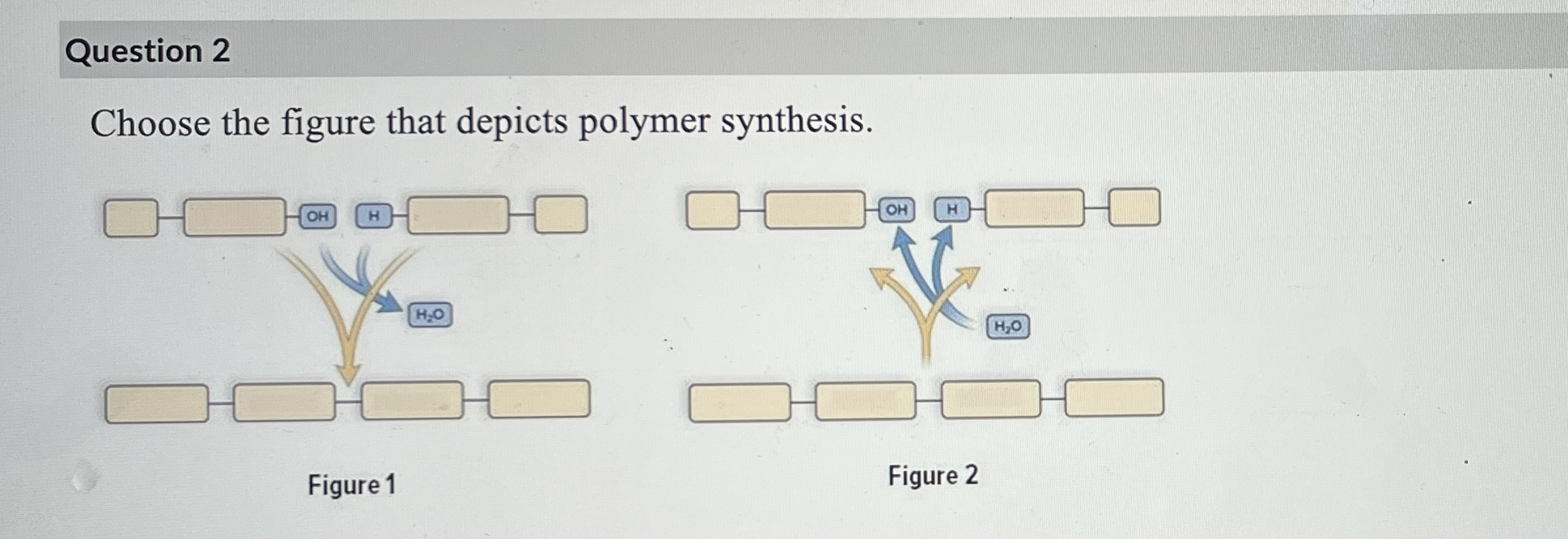
Choose the figure that depicts polymer synthesis
Figure 1
3
New cards
Which of the following organisms contain the polysaccharide cellulose?
Plants
4
New cards
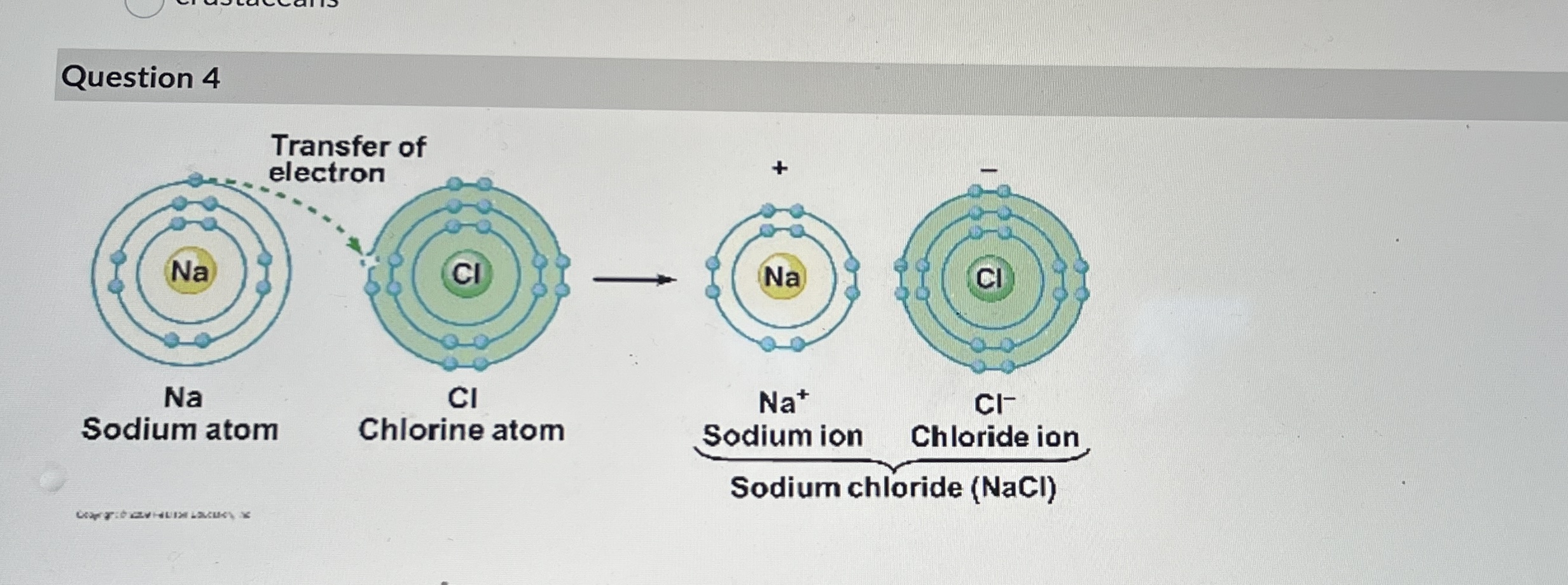
What change is occurring in this figure?
Sodium is losing an electron
5
New cards
____ are weak bonds that are not strong enough to hold atoms together to form molecules but are strong enough to form bonds within and around large molecules
Hydrogen bonds
6
New cards
Many names for sugars end in the suffix
\-ose.
7
New cards
A triglyceride is a polymer made up of which kind of subunits?
fatty acids and glycerol
8
New cards
A major type of lipids found in cell membrane is
phospholipids
9
New cards
The results of dehydration synthesis can be reversed by
hydrolysis
10
New cards
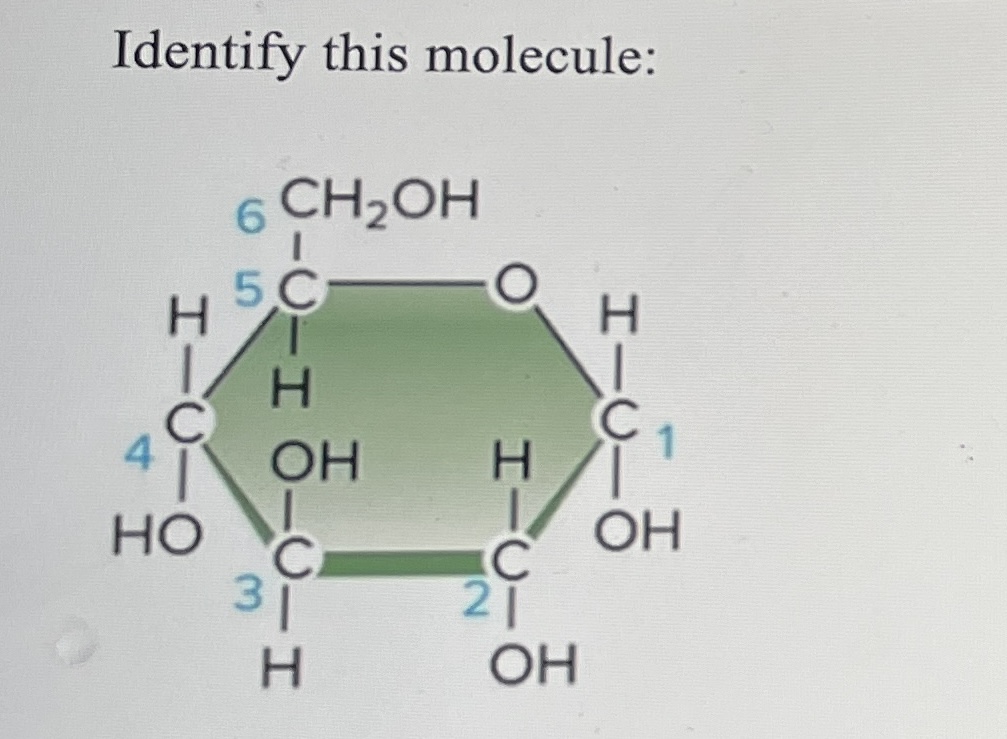
Identify this molecule
Carbohydrate
11
New cards
Carboxyl group
\-COOH
12
New cards
Which of the following particles are found in the nucleus of an atom?
protons and neutrons
13
New cards
Carbonyl group
\-C=O
14
New cards
The four most common elements in living organisms
C,H,O,N
15
New cards
How many molecules of water are used during hydrolysis to break the following polypeptide into its constituent amino acids : alanine-leucine-tryptophan-glycine-valine-alanine
five
16
New cards
Which functional group when attached to a hydrocarbon chain will form an alcohol?
Hydroxyl
17
New cards
If the atomic number of an element is 6 (for example in carbon) and the atomic mass is 12.01, how many protons are there in the nucleus?
6
18
New cards
Amino group
\-NH2
19
New cards
A hydrogen atom has one electron. How many covalent bonds can hydrogen form?
One covalent bond
20
New cards
Ocean acidification is the result of an increased amount of CO2 being dissolved in ocean water. This is problematic because…
fewer carbonate ions are available for organisms such as corals and clams to produce their calcium carbonate shells and skeletons
21
New cards
What type of microscope would you use to study the finest details of surface texture of a human hair?
Scanning electron microscope
22
New cards
What is the fundamental difference between covalent and ionic bonding?
In a covalent bond, the partners share a pair of electrons, in an ionic bond, one parter accepts electrons from the other
23
New cards
In lab, your biology instructor has asked you to identify an unknown solution. During one of your tests you perform your sample turns light purple indicating the presence of peptide bonds. Based on this information, you determine that your solution contains
Protein
24
New cards
Protein structure is sensitive to changes in ____ which can affect the function of an enzyme
Temperature, pH, salt concentration (all of these choices)
25
New cards
Compared to a solution of pH 3, a solution of pH 1 is
100 times more acidic
26
New cards
Foods that are high in fiber and contain cellulose are most likely derived from
plants
27
New cards
A polysaccharide is a polymer made up of which kinds of monomers?
simple sugars
28
New cards
A fat is also called a triglyceride because it contains __ fatty acids
three
29
New cards
Fatty acids with double bonds between their carbons are said to be
unsaturated
30
New cards
Which of the following structures is classified as a nucleic acid?
RNA
31
New cards

How are these amino acids attached together?
amino group to carboxylic acid group
32
New cards
The idea that all living things are composed of cells and that all cells come from other cells defines
the cell theory
33
New cards
Fatty acids are
hydrophobic
34
New cards
The tendency of water molecules to stick together is referred to as
cohesion
35
New cards
Which carbohydrate is found in the exoskeleton of insects and crabs and can be used to make surgical thread?
chitin
36
New cards
In a water molecule, hydrogen and oxygen are held together by a ____ bond that shares electrons
Polar covalent
37
New cards
Which of the following is a function of a steroid?
Sex hormone
38
New cards
A phospholipid is composed of
One glycerol molecule linked to one phosphate group and two fatty acids
39
New cards
Phosphate group
\-OPO3^2-
40
New cards
Proteins differ from one another because
the sequence of amino acids in the polypeptide chain differs from protein to protein
41
New cards
The storage form of carbohydrate is __ in animals and __ in plants.
glycogen…starch
42
New cards
A fat is different from a phospholipid because a fat is composed of
one glycerol molecule linked to three fatty acids
43
New cards
Methyl group
\-CH3
44
New cards
Which type of microscope would you use to study the detailed structure of an organelle in a human liver?
Tranmission electron microscope
45
New cards
What term is used for molecules that have identical molecular formulas but the atoms in each molecules are arranged differently?
Isomer
46
New cards
Many names for enzymes end in the suffix
\-ase
47
New cards
A solution with a pH of 7 is
neutral
48
New cards
Towels made out of cotton dry your skin easier compared to synthetic towels because cotton contains cellulose fibers that are
hydrophilic
49
New cards
Which type of microscope would you use to study changes in shape of living human blood cell?
light microscope
50
New cards
Which of these statements is NOT TRUE about DNA?
It contains the sugar ribose
51
New cards
Nucleic acid is composed of nucleotides. A nucleotide consists of
a nitrogenous base, a sugar, and a phosphate group
52
New cards
A solution with a pH of 2 is
strongly acidic
53
New cards
Sucrose (a disaccharide) is formed
from two monosaccharides through dehydration synthesis
54
New cards
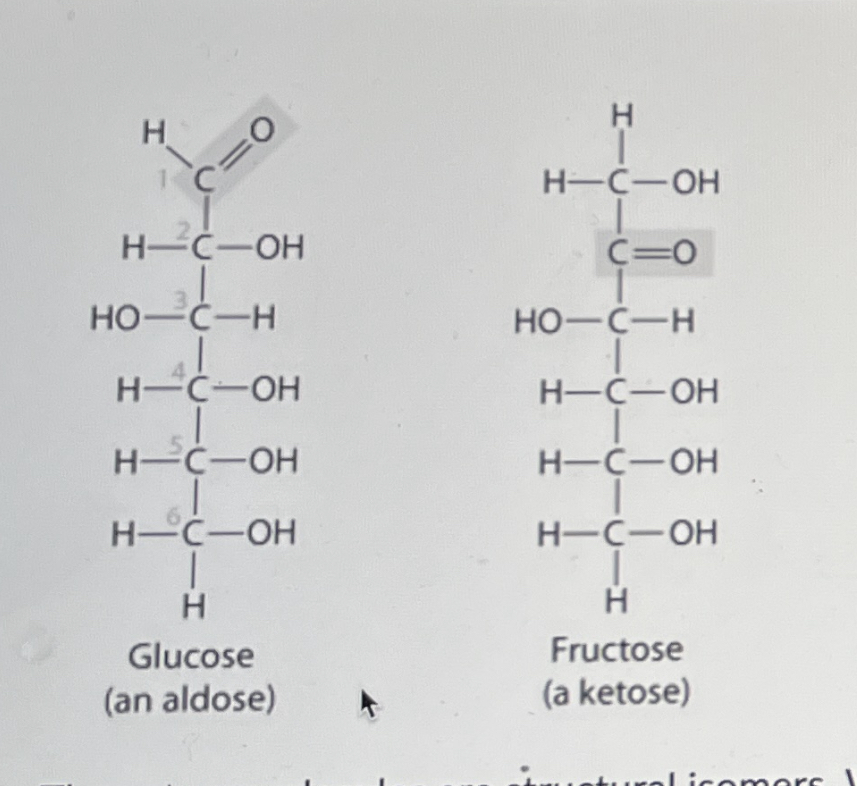
These two molecules are structural isomers. What is the difference between them?
the location of a double-bonded oxygen atom
55
New cards
The surface area of an organism decreases relative to it’s volume as it’s size increases. T or F?
True
56
New cards
When an enzyme catalyzes a reaction,
it lowers the activation energy of the reaction
57
New cards
Chloroplasts contain dislike membrane sacs. These sacs are arranged in stacks that are called
Grana
58
New cards
The function of chloroplasts is
photosynthesis
59
New cards
Heating inactivates enzymes
changing the enzymes three-dimensional shape
60
New cards
Osmosis can be defined as
the diffusion of water
61
New cards
What would happen if a drug directly interfered with the functioning of RuBP carboxylase in the Calvin cycle?
Carbon dioxide would not be fixed to RuBP, stalling the Calvin cycle
62
New cards
Which is the best definition of osmosis?
The movement of water across a semi permeable membrane from an area of higher water concentration to an area of lower water concentration
63
New cards
Photorespiration
is an evolutionary relic from when atmospheric O2 levels were low and did not interfere with rubisco
64
New cards
A coenzyme is
a nonprotein organic helper like a vitamin that interacts with an enzyme to allow it to work
65
New cards
A major type of lipid found in cell membrane is
phospholipids
66
New cards
Kinetic energy differs from chemical energy in that
kinetic energy is the energy of a moving object, whereas chemical energy is the potential energy of molecules
67
New cards
What are the end products of photosynthesis?
Oxygen and carbohydrates
68
New cards
All of the follow would denature a protein except
a missing coenzyme
69
New cards
The molecules responsible for membrane transport are
proteins
70
New cards
Autotrophs that utilize light as their energy source are
photoautotrophs
71
New cards
Certain cells that line the stomach synthesize a digestive enzyme and secrete it into the stomach. This enzyme is a protein. Which of the following processes could be responsible for its secretion?
exocytosis
72
New cards
Where at the ATP and NADPH used that are produced in the light reaction of photosynthesis?
in the Calvin cycle
73
New cards
Which of the following is a typical feature of an ATP-driven active transport mechanism?
The solute moves against the concentration gradient
74
New cards
In the lab, you can use a special balloon that is only permeable to water, but not sucrose, to make an “artificial cell.” The balloon is filled with a solution of 80% sucrose and 20% water and is immersed in a beaker containing a solution of 40% sucrose and 60% water. Which of the following will occur?
Water will enter the balloon
75
New cards
Which of the following is an enzyme?
hydrolase
76
New cards
Why are most plants green?
Chlorophyll a reflects green light
77
New cards
How many times does the Calvin cycle need to run if it incorporates 3 CO2 in each run to ultimately produce one glucose molecule?
two times
78
New cards

Based on your knowledge of the process of photosynthesis, the plant in the container placed under red light would probably
absorb more CO2 than the plants under the green light
79
New cards
Plasma membranes are selectively permeable. This means that
the plasma membrane allows some substances to enter or leave a cell more easily than others
80
New cards
Substrates bind to an enzymes ___ site
active
81
New cards
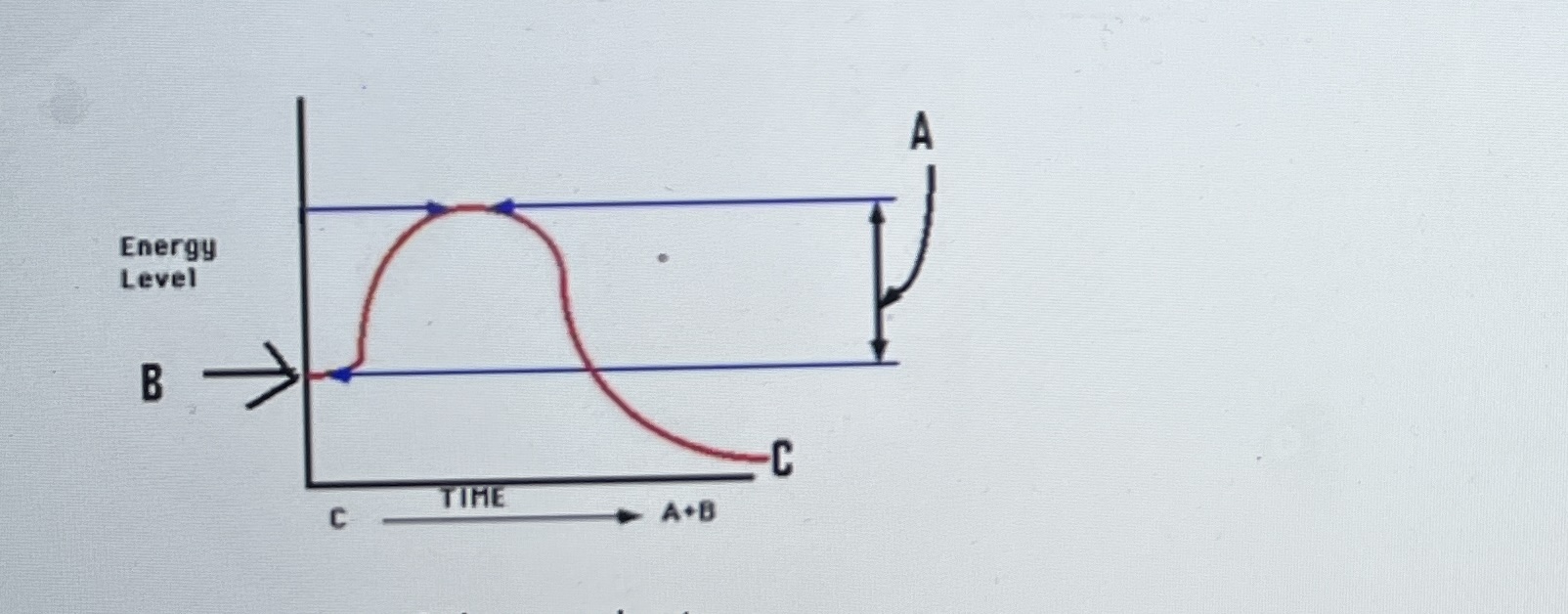
Study the figure shown here. What does the letter A depict?
energy of activation
82
New cards
CO2 enters and O2 escapes from a leaf via small openings that are called
stomata
83
New cards
Diffusion does not require the cell to expend ATP. Therefore, diffusion is considered a type of
passive transport
84
New cards

If you expose a photosynthesizing plant to water that contains both radioactive H and radioactive O, in which of the products of photosynthesis will the radioactive H and O show up?
H is glucose and water; O in O2
85
New cards
_____ is a product of the Calvin cycle that is used to form glucose phosphate, amino acids or fatty acids
glyceraldehyde-3-phosphate(G3P)
86
New cards
Receptor mediated endocytosis is a process that ___
allows for the uptake of only specific molecules that fit into the receptor
87
New cards
Anabolism is the process of __ larger molecules that __ energy and is therefore an __ reaction
building…consumes…endergonic
88
New cards
The oxygen released into the air as a product of photosynthesis comes from
water
89
New cards
What is the basic difference between exergonic and endergonic reactions?
Exergonic reactions release energy; endergonic reactions absorb it
90
New cards
Which of the following is a true statement about enzyme inhibition?
All of the statements are true.
91
New cards
A phospholipid is composed of
one glycerol molecule linked to one phosphate group and two fatty acids
92
New cards
During redox reactions,
electrons are lost from one substance and added to another substance
93
New cards
The sum of the chemical reactions in a cell constitute
metabolism
94
New cards
Phagocytosis is to eat as pinocytosis is to
drinking
95
New cards
A cofactor is
an inorganic factor that interacts with an enzyme to allow it to work properly
96
New cards
What is the source of energy that provides the boost for electrons during photosynthesis?
light
97
New cards
Which of the following is a sugar?
ribose
98
New cards
C4 plants and CAM plants are adapted to high temperatures and dry environments. They have an advantage over C3 plants in that they
can close their stomata during the day to preserve water and still fix enough CO2 for the Calvin cycle
99
New cards
How does inhibition of an enzyme-catalyzed reaction by a competitive inhibitor differ from inhibition by a noncompetitive inhibitor?
competitive inhibitors bind to the active site of the enzyme; noncompetitive inhibitors bind to a different site
100
New cards
You are adrift in the Atlantic Ocean, and, being thirsty, drink the surrounding seawater. As a result,
you dehydrate yourself